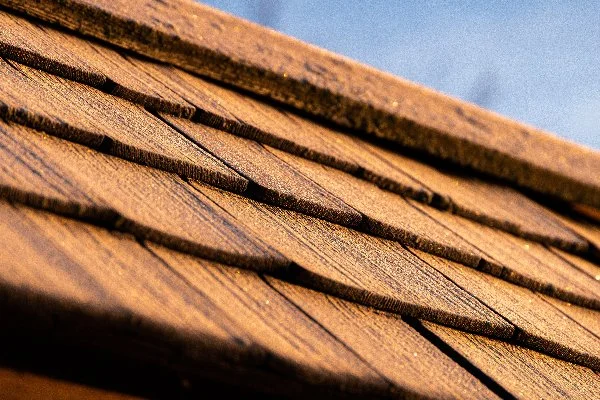The Maintenance of Wood Shingled Roofs
Wood shingled roofs offer a timeless beauty and distinctive character to any home, standing out for their natural appearance and remarkable durability. Rooted in tradition yet versatile enough for modern designs, these roofs embody a blend of functionality and aesthetic appeal. However, like any aspect of a home, they require specific care and maintenance to uphold their integrity and extend their lifespan. In this article we'll talk about the essential practices for maintaining your wood shingled roof, covering everything from regular inspections and cleaning to the application of protective coatings and the management of pest infestations. By adhering to these guidelines, homeowners can ensure their roof remains in excellent condition, safeguarding their home while preserving its unique charm.
Inspecting Your Wood Shingles Regularly
Regular inspection of your wood shingles is a key step in maintaining the longevity and beauty of your roof. Ideally, you should inspect your roof at least twice a year, preferably in the spring and fall, to identify any problems early on. Look for signs of wear and tear such as splitting, warping, or rotting shingles, as these can be early indicators that repairs or replacements are needed. Pay special attention to areas around chimneys, vents, and valleys where water or debris can accumulate, as these spots are particularly vulnerable to damage.
Cleaning and Removing Moss, Algae, and Lichen
Moss, algae, and lichen can accumulate on wood shingles over time, especially in damp, shaded areas, detracting from your home’s appearance and potentially damaging the wood. To effectively clean your roof, you can use a mixture of water and mild bleach or a commercial wood-cleaning solution designed for this purpose. It's important to apply the solution gently with a soft-bristled brush, avoiding the use of high-pressure washers, which can cause harm to the wood material. After cleaning, rinse the roof thoroughly with low-pressure water to remove any residue, ensuring the longevity and aesthetic appeal of your shingle roof.
Repairing or Replacing Damaged Shingles
When it comes time to repair or replace damaged wood shingles, it's crucial to act swiftly to prevent further damage to your roof. Start by carefully removing the damaged shingle, taking care not to disturb the surrounding shingles more than necessary. If you're replacing a shingle, make sure the new one matches the existing ones in terms of size, shape, and color to maintain a uniform appearance. It's also a good idea to treat new shingles with a wood preservative before installing them to enhance their durability and resistance to the elements. If you're unfamiliar with replacing shingles or not used to being on a roof, it's best to call in a professional roofing contractor who specializes in wood shingle roofs. With their knowledge and expertise, they'll ensure the job is done correctly and safely.
Applying Protective Coatings and Treatments
After ensuring that your wood shingles are clean and any damaged ones are replaced, applying a protective coating or treatment is a crucial next step to extend their life. Look for products that offer UV protection, water repellency, and resistance to mold and mildew. These treatments not only preserve the integrity of the wood but also help maintain its natural beauty against the elements. It’s best to apply these coatings on a clear, dry day and follow the manufacturer's instructions for the best results. Regular application, as per the product’s recommendation, will act as a shield for your shingles, keeping your roof in prime condition for years to come.
Preventing and Dealing with Pest Infestations
Pest infestations can pose a significant threat to the integrity of your wood shingle roof. Common culprits include termites and carpenter ants, which are known to cause damage by tunneling into the wood. To protect your roof, it's essential to regularly check for signs of pest activity, such as sawdust-like droppings or visible tunnels. Implementing preventative measures, such as treating the wood with pest repellent or ensuring your attic is well-ventilated to reduce moisture, can greatly reduce the risk of infestation. If you do discover pests, it's advisable to contact a professional exterminator to address the problem effectively and prevent future occurrences.
Maintaining a wood shingle roof requires a blend of regular inspections, timely repairs, and preventive treatments. While the tasks may seem daunting at first, incorporating these practices into your routine can greatly extend the life of your roof and preserve its beauty. Remember, the key to avoiding costly repairs and replacements lies in early detection and care. Don't hesitate to seek professional help when needed—the expertise of a skilled roofing contractor can prove invaluable. With proper maintenance, your wood shingle roof can continue to protect and enhance your home for many years to come.


